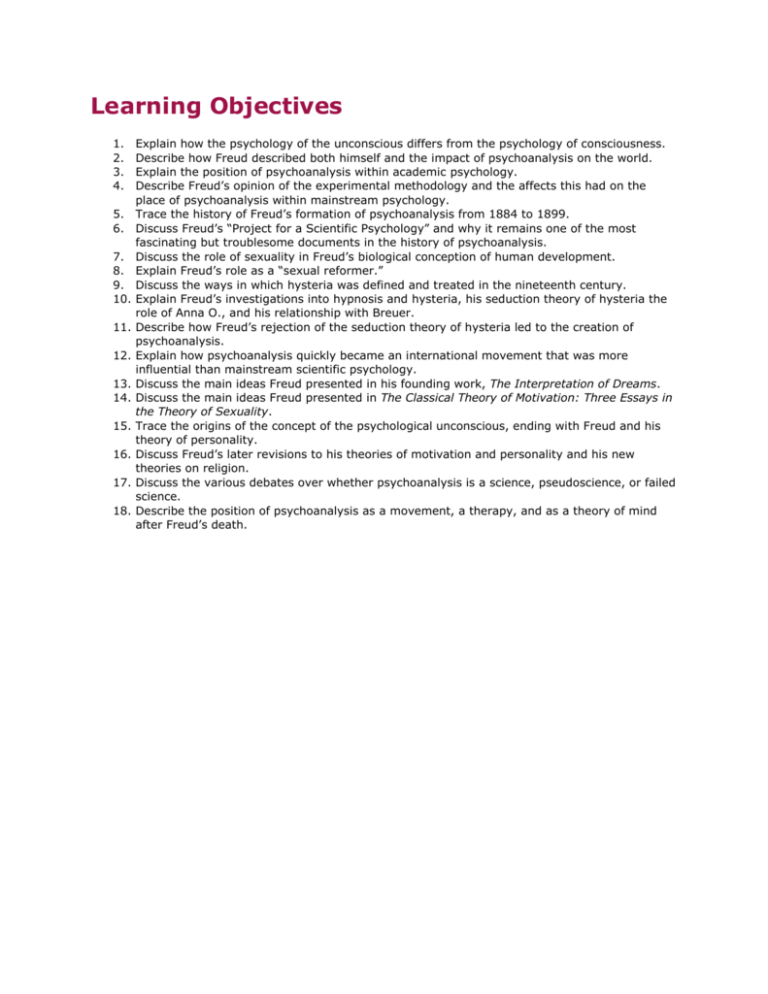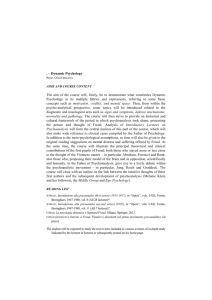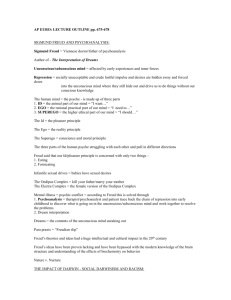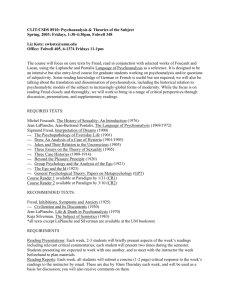Learning Objective 9
advertisement

Learning Objectives 1. 2. 3. 4. 5. 6. 7. 8. 9. 10. 11. 12. 13. 14. 15. 16. 17. 18. Explain how the psychology of the unconscious differs from the psychology of consciousness. Describe how Freud described both himself and the impact of psychoanalysis on the world. Explain the position of psychoanalysis within academic psychology. Describe Freud’s opinion of the experimental methodology and the affects this had on the place of psychoanalysis within mainstream psychology. Trace the history of Freud’s formation of psychoanalysis from 1884 to 1899. Discuss Freud’s “Project for a Scientific Psychology” and why it remains one of the most fascinating but troublesome documents in the history of psychoanalysis. Discuss the role of sexuality in Freud’s biological conception of human development. Explain Freud’s role as a “sexual reformer.” Discuss the ways in which hysteria was defined and treated in the nineteenth century. Explain Freud’s investigations into hypnosis and hysteria, his seduction theory of hysteria the role of Anna O., and his relationship with Breuer. Describe how Freud’s rejection of the seduction theory of hysteria led to the creation of psychoanalysis. Explain how psychoanalysis quickly became an international movement that was more influential than mainstream scientific psychology. Discuss the main ideas Freud presented in his founding work, The Interpretation of Dreams. Discuss the main ideas Freud presented in The Classical Theory of Motivation: Three Essays in the Theory of Sexuality. Trace the origins of the concept of the psychological unconscious, ending with Freud and his theory of personality. Discuss Freud’s later revisions to his theories of motivation and personality and his new theories on religion. Discuss the various debates over whether psychoanalysis is a science, pseudoscience, or failed science. Describe the position of psychoanalysis as a movement, a therapy, and as a theory of mind after Freud’s death.








